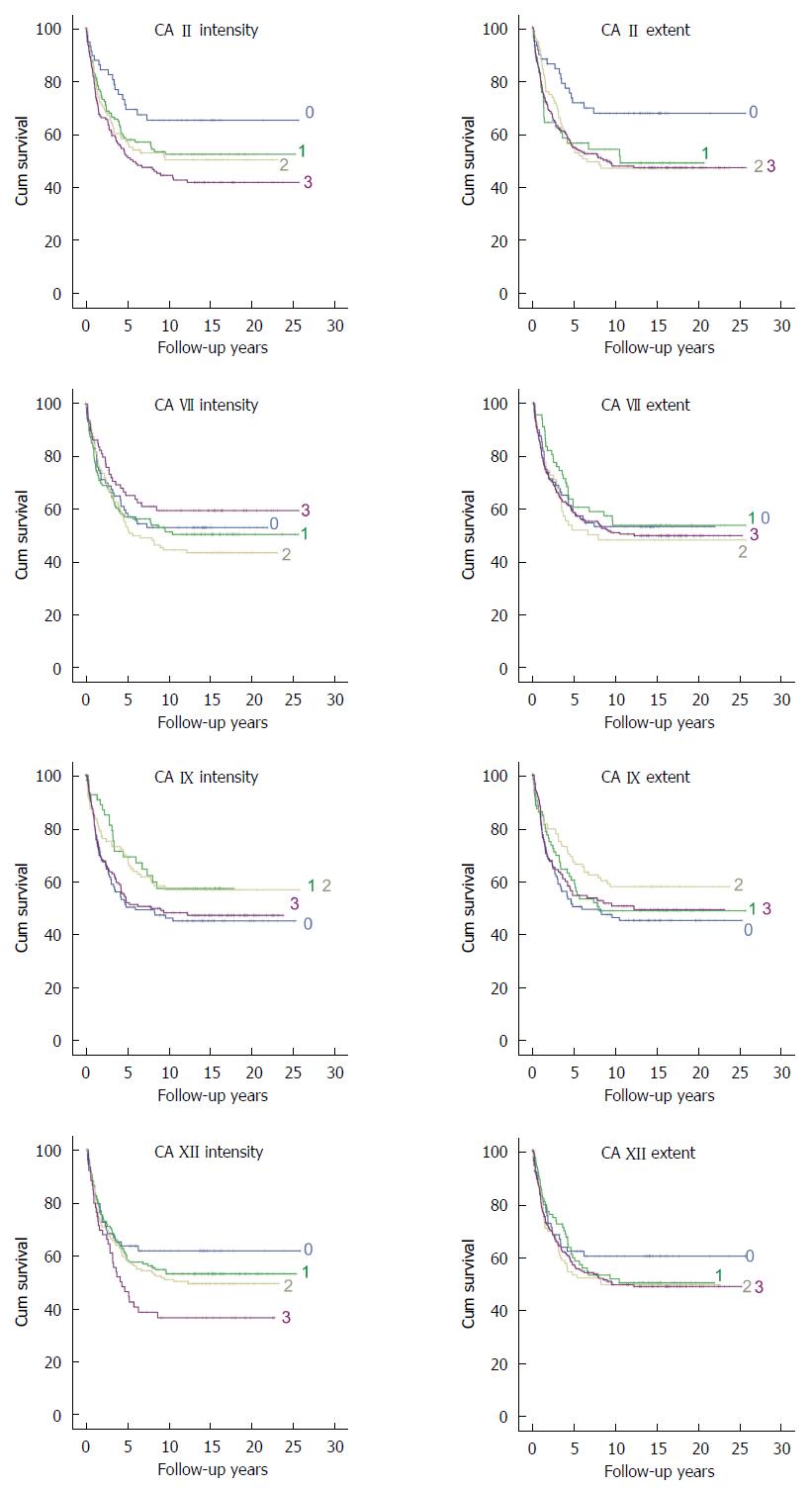Copyright
©The Author(s) 2016.
World J Gastroenterol. Sep 28, 2016; 22(36): 8168-8177
Published online Sep 28, 2016. doi: 10.3748/wjg.v22.i36.8168
Published online Sep 28, 2016. doi: 10.3748/wjg.v22.i36.8168
Figure 1 Immunohistochemical stainings of carbonic anhydrases II, VII, IX and XII.
CA II (A, B, C), CA VII (D, E, F), CA IX (G, H, I), and CA XII (J, K, L) are shown in specimens of normal pancreas (A, D, G, J), colon (B, E, H, K) and colorectal carcinoma (C, F, I, L). The normal pancreas and colon sections were used for control purposes. CA II was located to the pancreatic ducts and centroacinar cells. In normal colon the staining is strongest in the enterocytes of deep crypts. In colorectal cancer, CA II is strongly expressed in cancer cells. CA VII stains stromal tissue in all specimens, while the cancer cells show only minimal or no staining. CA IX antibody weakly stains ductal and some acinar cells of pancreatic tissue and also basolateral cell membranes in basal parts of colonic crypts. In colorectal cancer, CA IX is strongly expressed in malignant cells, whereas the necrotic part is negative. CA XII antibody stains basolateral membranes of pancreatic acinar cells and colonic enterocytes, and malignant cells of colon carcinoma. Original magnifications × 400, Bars 50 μm.
Figure 2 Effect of CA II, CA VII, CA IX and CA XII expression on survival of colorectal patients.
Survival of 539 colorectal cancer patients operated between 1983-2001 in Helsinki University Hospital was recorded and the expression of carbonic anhydrases (CA II, CA VII, CA IX and CA XII) was evaluated from immunohistochemical stainings of tumor specimens. The effects of CA expressions on survival were analyzed by Kaplan-Meier analyses. Both CA II staining intensity (P = 0.004) and extent (P = 0.022) correlated with the patient survival. A weak correlation was also found between the CA XII staining intensity and survival (P = 0.020).
- Citation: Viikilä P, Kivelä AJ, Mustonen H, Koskensalo S, Waheed A, Sly WS, Pastorek J, Pastorekova S, Parkkila S, Haglund C. Carbonic anhydrase enzymes II, VII, IX and XII in colorectal carcinomas. World J Gastroenterol 2016; 22(36): 8168-8177
- URL: https://www.wjgnet.com/1007-9327/full/v22/i36/8168.htm
- DOI: https://dx.doi.org/10.3748/wjg.v22.i36.8168










